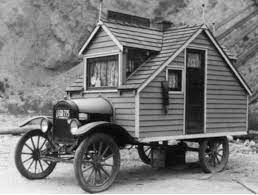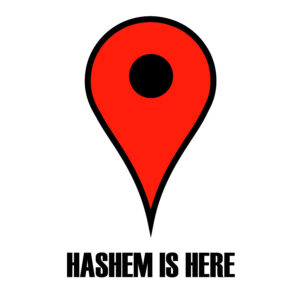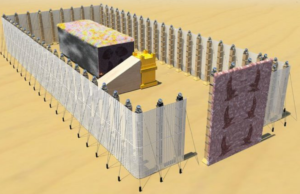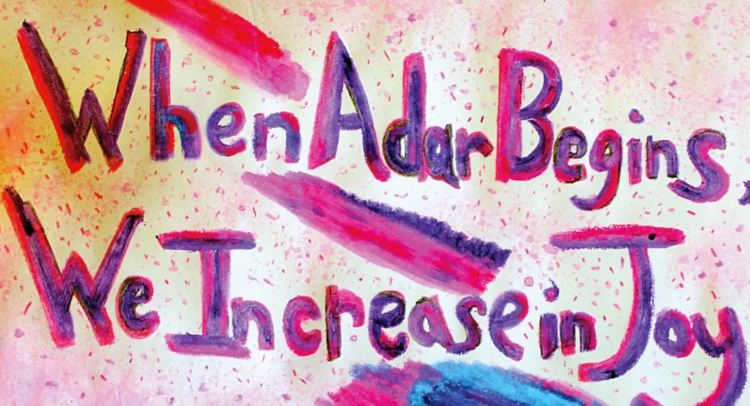Raboyseyee and Ladies,
We begin with mazel tov wishes to our friends Limor & David Decter upon the arrival -and bris earlier this morning with the heylige Ois in attendance – of their new grandson Azriel Yitzchak Herskowitz born to their children Jeremy and Eva Herskowitz. A big mazel tov to Saba Yossi Cohen, to his wife and great grandmother Aliza, and of course to great grandmother Barbara Decter Schlussel. Mazel tov as well to grandparents Peggy and Michael Herskowitz, to Peggy’s parents (great grandparents), Ann and Jack Walisever and to great grandmother Judy Herskowitz. May Azriel Yitzchak be a source of nachas to his entire family.
And in a mazel tov we missed -mistama while traveling- mazel tov to our friends Doba and Kalman Isaacs upon the birth of granddaughter Gladys born to their children Ziona & Norman Greenberg. Mazel tov to the extended Isaacs and Greenberg families. May Gladys bring you all much joy and nachas.
One more the Ois missed: big mazel to wishes to our friends Dasi & Moti Weitz and to Chana and Jay Fenster upon the arrival of granddaughter Rachel, born to their children Yoni and Rikki Fenster. Wasn’t that long back when the Ois attended Yoni’s bar mitzvah and Rikki’s bat mitzvah; where have the years gone? May baby Rachel bring much joy to the entire family.
Luck is in the air & The First Mobile Home-
And we begin here: The heylige Mishneh teaches that from when the month of Av begins, one decreases acts of rejoicing. Rav Yehuda, son of Rav Shmuel bar Sheilas, said in the name of Rav: Just as when Av begins one decreases rejoicing, so too when the month of Adar begins, one increases rejoicing.
מִשֶּׁנִּכְנַס אָב מְמַעֲטִין בְּשִׂמְחָה וְכוּ׳. אָמַר רַב יְהוּדָה בְּרֵיהּ דְּרַב שְׁמוּאֵל בַּר שִׁילַת מִשְּׁמֵיהּ דְּרַב: כְּשֵׁם שֶׁמִּשֶּׁנִּכְנַס אָב מְמַעֲטִין בְּשִׂמְחָה — כָּךְ מִשֶּׁנִּכְנַס אֲדָר מַרְבִּין בְּשִׂמְחָה
The heylige and famous Gemora (Ta’anis 29a bottom) tells us that we are to increase simcha (joy), but how? That they don’t tell us. Although our Sages spell out -in some detail- just how to decrease simcha at the beginning of Av -the list of things we cannot do during the nine days is quite detailed, long and exhaustive- they offer little guidance on how to increase simcha in Adar. Nu, without guidance, how are we to be happy? What actions are we to take to increase happiness? How does happiness manifest? How does one -a not happy person- suddenly become happy? Can happiness be summoned on demand? Who knew?
Moreover, if one is miserable on Shevat 29, the day before, can one automatically be happy on Adar 1, the day after? Do the pressures of daily life miraculously disappear just because the calendar mamish turns over a new leaf? What about people for whom happiness is elusive? For whom real life -the daily grind- dictates otherwise? Do the daily rigors of life get suspended for the month? For two when there are two Adar’s? The list of what plagues people daily is way too long; how can they be mandated to increase joy? The bottom line: as the Ois reads the heylige Gemora, it appears to him azoy: it’s not that we are commanded -as we are during the Yom Tov of Sukkis – to be happy. There, the heylige Toirah mamish commands us to be happy; v’somachta b’cagecha, we must mamish be happy. As to Adar, it’s seemingly a happy, lucky month, the month Homon’s plans went awry following Esther’s encounter with the royal scepter, if you chap, and as mentioned just last week. Touch the scepter and good things happen. Good luck is seemingly in the air during Adar and for those reasons, don’t worry, be happy! How happy? Says Rav Pappa aozy: if you have to go to court, go during Adar and you have a better chance of winning your case. Which court? Ver veyst?

Did the heylige Gemora forgo happiness details because it is efsher inappropriate to command with any specificity on how to achieve happiness? The bottom line: simcha is seemingly a general spirit that flows in the soul of every human – an internal feeling that does not deal with details. Rather, it represents an elation and elevation above minutiae. Our sages teach us that happiness is in the air; we need to chap some.
Shoin, it’s mamish days since Matan Toirah (Revelation) and the RBSO of course knows – He knows all- that very soon, His newly minted Chosen People will be sinning with the eygel (golden calf) and will -as a result- have veered off the derech. The honeymoon will not last very long; the Yiddin will be cheating on Him! He knows that soon they will also be sinning again, this time through the miraglim (scouts/spies) and that He will sentence the not-yet-ready for-prime-time Yiddin to forty years of desert wanderings. But what will they do there? Left to their own devices and with no activities, they will surely find themselves in even more trouble. In fact, large sections of Sefer Bamidbar are dedicated to the retelling of their mischievous activities. What to do? Not to worry because the RBSO came up with several ingenious ideas.
Welcome to Parshas Teruma where the RBSO orders up the design and manufacture of the first ever mobile home. For Himself! And taka, the entire parsha is dedicated to the RBSO’s house on proverbial wheels which traveled along with the Yiddin as they traversed the midbar.
According to informed sources -let’s call one of them Wikipedia- the origins of the motorhome date back to 1910, when the Pierce-Arrow motor company introduced the Touring Landau model at the Madison Square Garden auto show. The Pierce-Arrow’s entry was specialized for the camper in mind—providing cargo compartments for camping equipment and even an on-board toilet. In the 1920s, individual builders and manufactures began to convert panel trucks and buses to be used for camping.
In hyntige tzeytin (todays times, in 2023), the North American recreational vehicle (RV) market is valued at $33.95 billion and is anticipated to reach $59.16 billion by 2027. Did Toirah inspired entrepreneurs chap this great opportunity? Did they build and sell small mobile homes and tell us that it’s good to have the RBSO right next to us in our collective driveways? They did not! Who did?

Bible inspired goyim reading their Gideon, King James, and or other versions, chapped this parsha. G-d had a motor home; they wanted one too. And listen to this: According to a new research report by Global Market Insights, the global RV market is estimated to reach $56.5 billion by 2024. How this opportunity slipped by the hands of our yeshiva trained Toirah inspired entrepreneurs is mamish bewildering. As mentioned, much to the Ois’s consternation, the Yiddin never fully exploited this mitzvah.
Ober is that emes? Yes, for the most part but not for our friends over at Chabad who in the midst of a quagmire of Jewish identity, introduced a new tool in the battle against assimilation and in the summer of 1967 -some say as early as 1962- rolled out the first “mitzvah mobile.” Converted trucks from Hertz (car rental company) were transformed into ad-hoc shuls, outfitted with Jewish books and religious accoutrements, including tefillin and shabbis candles.
The mitzvah-tank is used by Chabad-Lubavitch as a portable “educational and outreach center” and “mini-synagogue” (or “minagogue”) to reach out to non-observant and alienated Jews. Mitzvah tanks have been commonplace on the streets of New York City since 1974. Today they are found all over the globe in countries where Chabad is active.

The bottom line: Early goyim taught later goyim that when traveling, especially through a desert, it’s best done in an RV or motor home. Many more generations later, the Yiddin would discover the mini-van but it’s epes not the same. More on the RBSO’s mobile home below ober ershtens (firstly)…
Not to worry; besides giving the goyim a business opportunity, one that continues to grow geometrically, it’s specifically in this week’s parsha that the RBSO was also very good to His people and created for them multiple business opportunities. This week, as a result of the instructions for the grand Mishkan Project, the Yiddin became architects, builders, carpenters and decorators. Of course, not all the Yiddin; only those who showed little interest in learning the newly minted heylige Toirah. In other words, the oisvorfs! It would take until the 21st century for modern day yeshivas to figure out that not everyone is cut out for learning and that we taka need to train -without shame- carpenters, electricians, plumbers and handymen. We need them very badly.
Shoin, though this is our 13th time around the parsha, and though we have previously discussed some of the items the RBSO ordered for the project, what would an Ois review be like without some honorable mention of a few of the more exotic materials the Yiddin needed to source and how these items magically appeared in the midbar?
Two parshas back (Yisroy), the RBSO got married to the Yiddin. As married couples should, it was time to move in together -or, at least nearby. Ober, how could the RBSO, who according to most, has no physical features, possibly move in and live amongst the Yiddin?
Shoin, that technicality notwithstanding, this week, in Parshas Teruma, the RBSO will give Moishe very detailed instructions about the construction of His house. Says the heylige Toirah (Shmois 25:8) azoy: ”You will make for Me a sanctuary and I will dwell amongst them” – meaning He will dwell amongst the Yiddin. Of course, these words and many others in this week’s parsha have kept the writers of the medrish quite busy. Time permitting, we’ll circle back to a few. The RBSO wasn’t just moving in anywhere and into any house or sanctuary. He had very definitive ideas of what His dwelling should look and feel like. He will lay out every detail of its architecture, size and materials to be used to include furnishings, interior design and colors. Even pots and pans and other utensils will be delineated. The RBSO’s instructions were thorough and intricate. They set out materials, dimensions and who should be on the design team. They included blueprints for the ark that will hold the commandments and the table for sacrifices and the poles for lugging and the rings that hold the poles and the curtains and the lamps and the curious gold cherubim that will adorn the Mishkan and the enclosure that will surround it.

Moishe will have but a few tasks: select the contractor, source the requested materials and secure the funds needed to complete the project. Every project requires funding and this one was funded by what the heylige Toirah calls a Teruma (a gift). Today we know this as a tax or an assessment. This project planning and execution, occupy a healthy number of parshas in Sefer Shmois.
Nearly every parsha is enhanced by colorful medroshim whose authors envisioned what may have taken place as they masterfully take on challenging text but, if any parsha or topic cries out for midrashic interpretation and some colorful imagination to help us chap what the RBSO had in mind, it’s this week’s parsha of Teruma wherein the RBSO asks that the Yiddin build for Him a mobile home.
And as we will soon learn, the Mishkan (Sanctuary), the traveling “House of G-d” built by the Yiddin in the desert, was an elaborate structure built of royal and expensive materials. Reading the pisukim (passages) that describe its construction, leads us to ask azoy: What does such a grandiose gold laden building have to do with the RBSO? Does the RBSO need material things? That’s for Madonna! Lihavdil! Ober as we learn, the mishkan was the epitome of Divine presence; it’s where the RBSO’s essence could be found at times. Some of you may be wondering why the RBSO needed or wanted a structure built; isn’t He everywhere? Avada He is. Ober says the medrish so gishmak azoy: it’s taka emes that the RBSO is always among us, but the Mishkan back then and the Mishkans of today in the form of shuls, help us notice. Out of sight, out of mind?

And taka R. Yitzchok Abravanel asked this very question: why did the RBSO need a physical home? Why did He command the construction of the Tabernacle, when He said, “…that I may dwell among them”, as if He were an object demarcated and limited in space? Isn’t the opposite the real emes? Moreover, we are taught that the entire Mishkan which traveled along with the Yiddin on their 40-year midbar sojourn was no longer in use once they entered the Land. It was to be replaced with more permanent structures. Still, for reasons that are hotly debated, that’s what He asked for, demanded, and that’s what He got.
Some say the Mishkan was ordered to be built as atonement for the sin of the eygel (golden calf). Others, especially those who argue that the instructions to build the Mishkan were given before the big sin, suggest that the Yiddin built the Mishkan to keep the experience, emotions, and encounter of Matan Toirah on Har Sinai alive and to evoke the RBSO’s presence continuously—to ensure that revelation continues. Gishmak. Though the RBSO didn’t physically move in, His essence was at times present.

Ober said the Malbim so gishmak azoy: the physical structure of the Mishkan was not an end in itself, but rather a model of the inner, spiritual sanctuary we should strive to construct in our hearts. In other words: Each one of us needs to build for the RBSO a Mishkan in the recesses of our hearts, by preparing ourselves to become a Sanctuary for G-d and a dwelling place for G-d’s glory… thus it should be for all generations. Is this how the Yiddin live in our times? A nectiger tug (fuhgeddaboudit). Yiddin are indeed building homes -multi-million-dollar structures- but the last thing they have in mind is the RBSO’s Essence. Has anyone ever instructed their architect to design a room for the RBSO? Case closed!
Shoin, you all know that the project required many different materials. The elaborate list (found mamish at the beginning of the parsha, 25:3-7) included “…gold, silver, and copper; and turquoise, purple, and scarlet wool; linen and goat hair; red-dyed ram skins, tachash skins, shittim (acacia) wood; oil for illumination, spices for the anointment oil and the aromatic incense; shoham stones and stones for the settings, for the eyphoid and the choishen (breastplate).” For a people who were recently freed from more than either 210 or as much as 400 years of slavery, this was an ambitious task to say the least. What made this even more challenging was that the RBSO’s list did not include run-of-the-mill materials to build these important objects. Did you see a request for bricks, cement, sheetrock, stucco, or even aluminum siding? Was there a Home Depot efsher nearby? Punkt farkert (quite the opposite)! His instructions were very specific and did not allow for substitute materials. And even more harrowing for Moishe was that the RBSO expected that all of these items would be donated by “every person whose heart inspires him to generosity.” When was the last time you saw anyone inspired to give away gold?
And speaking of procuring the various materials for this massive midbar project …back a few decades when the Ois was a child, he so looked forward to this and next week’s parsha because the rebbe made us purchase a booklet called Hamishkan V’kaylov (the Mishkan and its Utensils) which contained many illustrations -not yet in color- of each of the materials, and the entire structure in its completed stage. If memory serves correctly, this booklet cost approximately $0.15 and was well worth the price. Bazman hazeh (in our times), Art Scroll and many others have more colorful and detailed depictions of these items. And back then, who gave a second thought as to how all these materials were procured in the desert. Ober as we get older, we begin to rethink the enormity of this undertaking and each year as this parsha rolls around, we are left bewildered as to how this project was undertaken and how it was possible that the midbar contained these resources, mostly unnatural.
Yearly as this parsha gets close, the Ois receives email from readers asking for a refresher course on the shittim wood. Readers want to chap how the medrish understands its availability for the project. Does shittim (acacia wood) grow in the midbar? And not just one tree but enough wood for a 72 Amah (about 160 ft) wooden beam? Not just one, but 48 of them? Were they delivered to the midbar? Pre-cut to size? Here we go. Shittim trees do not grow in the midbar! Ober not to worry; the medrish (Tanchuma 9) has an incredible pshat as to how 20 tons of wood mysteriously appeared in the midbar just at the right time. Seemingly, our forefather Yaakov Ovenu, who mamish longed to participate in the building of the future house of the RBSO, was the beneficiary of a nevuah (prophecy). He foresaw that his descendants, while in the desert hundreds of years in the future, would be instructed to build the mishkan for the RBSO. There’s more! He was given a list of required materials. While in Israel and mistama on days off, if you chap, from his four wives, Yaakov, who knew from wood, if you chap, planted saplings and instructed his children to diligently transplant them to Mitzrayim (Egypt). Shoin, hundreds of years later, once freed, while packing up to leave, the soon to be Yiddin -instead of schlepping bread for the journey- decided to carry an entire forest of shittim wood just in case. In fact, they carried so much wood; it would later supply the mishkan with at least 800 cubic feet, or twenty tons, of usable wood. The bottom line: wood always come in handy, if you chap. Another medrish will tell us that Yaakov knew something else about these trees; we’ll get to that later.
Yet another medrish will tell us that it was Avrohom Oveenu who planted the shittim tree, and in its shade served the Malochim (Angels) who visited him following his bris a meal. Seemingly he also davened under the shittim tree. Over time, the tree grew and during Kriyas Yam Suf (splitting of the Sea) the Malochim (maybe even the same ones) cut it down and dropped it on the shore. The Yiddin figured that such a large tree could be used for something important so they brought it with them. Sure enough, this tree was destined to be the middle beam of the Mishkan. And now you know.
And why were they called shittim trees? Because they were planted along the Shittim Brook. Simple enough ober this was no ordinary brook. The medrish tells us that the shittim brook (way before the advent of the blue pill), acted as a natural aphrodisiac. One -or more- who drank its waters would become sexually stimulated and immoral. The Sodomites used to drink from this brook regularly, and they were taka, as we know, a bunch of chazerim vilde chaya perverts. Says the medrish: When the Moshiach arrives (from Crown Heights avada), this brook will dry up completely. Nu, thankfully you’re safe until then. Not FDA approved but seemingly still gave good and plenty of wood!
And this is taka why Yaakov took some of these trees with him when he went to Mitzrayim. He wanted his descendants to use this very wood to build the Tabernacle, and in that zechus (merit), the power of the urge that leads to sexual misconduct and immorality, would be weakened. Yaakov, through prophesy, saw that when the Yiddin would leave Egypt, they would stay at this Shittim Brook. He was hopeful that if the shittim trees were used to build the Tabernacle, its waters would not lead them to sexual temptation. Seemingly, the brook had magical powers.
Shoin: It was taka a nice thought, ober, when we get to Sefer Bamidbar, we will learn that his plan did not work out quite as intended. The Yiddin, would encounter the Midianite and Moabite shiksa mydlich (girls) and all hell would break loose.
Ober not to worry because yet another medrish will tell us that not all the Yiddin drank the magical potion at the shittim brook; only the bad apples, the Erev Rav, remember them? Says the Medrish veyter: the only ones that sinned at the shittim brook were members of the Eruv Rav (mixed multitude). Those guys partied hearty, and their sexual misconduct was on display with the Moabite girls (Bamidbar 25:1). The emesdike (true) jfb (Jews from birth) Yiddin did not sin; mistama they weren’t thirsty. Perhaps they preferred Perrier or stam azoy spring water. The shittim wood they carried out of Mitzrayim to build the mishkan (Tabernacle) subdued their evil urges and prevented them from being overcome by passion. Or, perhaps they were so tired from schlepping the 160 foot wooden beams, that they had no koiach for sexual activity, even with the Moabite shiksas. Logical pshat? Why not? it’s the medrish! What really happened and did the shittim brook really have magical powers and did it mamish produce large wood? Ver veyst? Ober let this be a warning to all of you: wood or no wood, you must overcome your desires and stop laying blame on the shittim brook for your chazerish behavior.
Grada this medrish holds some water, if you chap, and avada we all recall that the RBSO was taka quite angry with the Yiddin over the Moabite shiksa embroglio and schmeissed them with a plague (Bamidbar 25:4,9). Ober why were the rest of the Yiddin punished if they didn’t partake in the forbidden relations? Taka an excellent kasha. Seemingly, they were punished because they did not do anything to prevent the Eruv Rav from sinning; maybe they were too busy watching, ver veyst. Says the heylige Toirah: the only thing that stopped the plague was the bravery of Pinchas, who subdued the RBSO’s anger. But let’s not get too far ahead, we’re only in Shmois. Ober had the other Yiddin partaken in the water festivities and sinned as a result, nothing would have helped and we’d all have been wiped out, loi olanu (heaven forbid). Why we’re still here, ver veyst? The bottom line: based on the medrish, the Tabernacle, the Ark, the Shulchon (Table), and the sacrificial altar were all made out of shittim wood. And the take-away? Wood has many uses, some holy and others, not so.
And how were the Yiddin able to transport this amount of wood? Through yet another neys (miracle), just one of many in the magical midbar. The medrish tells us that they carried the wood across the Reed Sea at night. The RBSO helped them bring the wood all the way from Egypt while they were being pursued by their enemies who wanted to kill them. Shoin: as we have stated in the past on many an occasion, the midbar was like Disney World, a magical place with daily miracles; don’t you wish you were there?
Earlier we learned that Yaakov knew that the shittim trees which came from the shittim brook, had magical powers of seduction. And because he had ruach hakoidesh (Divine Prophesy), he chapped how dangerous the waters could be to overall emotional well-being of the already fragile Jewish people. He knew the Yiddin would stop off at the brook for a drink or more. What to do? Says the medrish: he instructed his descendants to take the trees from the Shittim Brook to Mitzrayim. He was hopeful that having the trees with them while there for 210 years would over time weaken their evil urges for sexual misconduct with the hot Mitzri shiksas. Avada you all know that Mitzrayim was known to be a place of very loose sexual morality, mamish like Thailand today. You didn’t learn that in Yeshiva? Ok- now you know. The medrish concludes by telling us that as a result of having transported the trees over to Mitzrayim, the Yiddin, who were around the mitzri shiksa for approximately 210 years, were never involved in such immorality. And for this reason alone, they deserved to be liberated. Did that happen? Ver veyst? It’s medrish where anything is possible.
A gitten Shabbis and Choidesh Adar; don’t worry, be happy!
The Heylige Oisvorfer Ruv
Yitz Grossman
